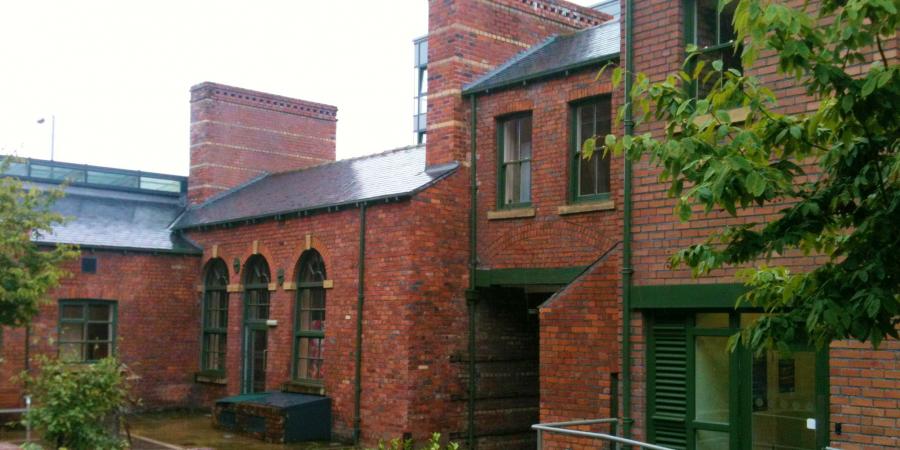53.388194360923, -1.4792171493173
The Titanic Works is Grade II listed, and located at 24 Malinda Street (near Hoyle Street) Sheffield. It comprised four buildings set around a central works yard. The works contained three crucible furnaces, of which one was a rare, double-stack furnace. Constructed in two phases between 1850 and 1890, it operated until 1950, producing high-quality crucible steel used for making the cutlery and tools for which Sheffield was world famous.
Its melting room had rows of six melting holes in front of each chimney stack. Vase-shaped crucibles, made of a clay able to withstand the furnace’s 1600º C temperature, were placed on iron grates in the base of the holes, and packed around with coke. When white-hot, the crucibles were filled with lumps of crude ‘blister steel’. After firing for up to six hours, to burn off the impurities, the crucibles were lifted out using tongs, and the molten steel poured into ingot moulds to cool.
Below the melting room was the cellar, which supplied the air for the furnace. It had rows of narrow brick ash-pits below each melting hole into which the coke ash fell. One room in the cellar was used for making the crucibles, each of which could only be used a maximum of three times before needing to be replaced.
Drawing on Heritage colouring sheet
The Titanic Works has also provided inspiration for one of our mindfulness 'Drawing on Heritage' colouring sheets! The design is based on a mosaic found at the works. You can download the free PDF design using the link at the bottom of the page.
